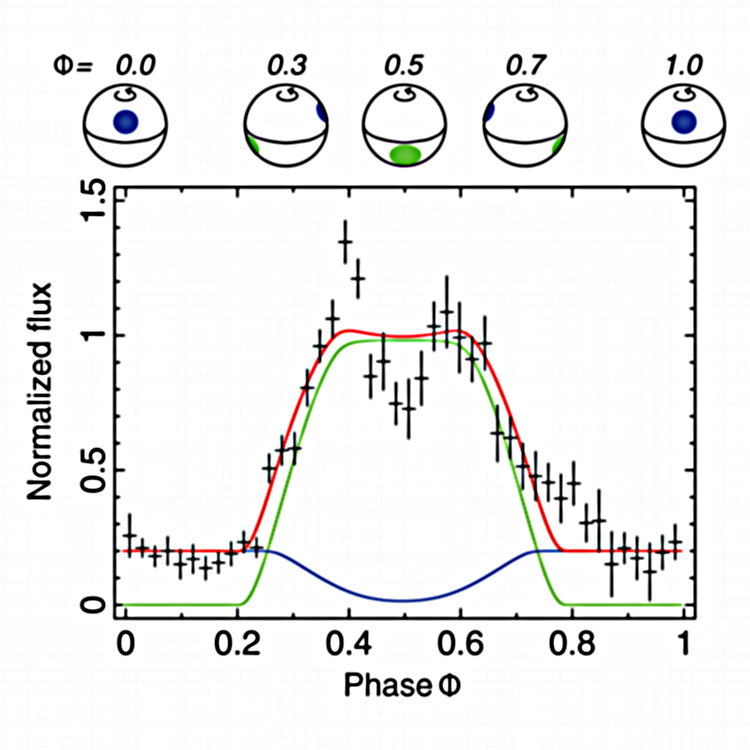
 Credit: K. Hamaguchi et al.
Credit: K. Hamaguchi et al.
Hot Spot
Stars form when dense gas clouds floating about in space begin to organize themselves through the action of gravity. This process happens slowly and gracefully, then rapidly and violently, generating both heat and light as matter falls onto the stellar surface. The interplay of gravity and spin flattens the cloud, forming a disk of gas and dust around the newly-forming star. Understanding the connection between this rotational motion and the gravitational pull of the young protostar is a key constraint for our understanding of star formation. Now astronomers have been able to use a new tool to find the spin of an important young protostar named V1647 Ori. V1647 Ori first rose to prominence in January 2004 when astronomers saw a bright outburst from the star that lit up a conical patch of dust in the star's vicinity, a patch now called McNeil's Nebula. Since the eruption, astronomers have been curious about the star, and have kept many eyes on it. The image above shows the changing brightness of the star in X-rays, as monitored by the Chandra, XMM-Newton and Suzaku X-ray satellite observatories. The solid lines shows the theoretical variation from a model in which two X-ray emitting spots are located in opposite hemispheres of the protostar. These spots are thought to be high temperature regions produced as matter flows along the protostar's magnetic field and crashes onto the protostellar surface. As the protostar spins once per day, different portions of the spot can be seen, causing the X-ray brightness to rise and fall. These X-ray observations not only help measure the rotation period of a still-forming star, but they also help astronomers understand how the young star's magnetic field helps the star grow.
Published: July 9, 2012
<
HEA Dictionary ● Archive
● Search HEAPOW
● Other Languages
● HEAPOW on Facebook
● Download all Images
● Education ● HEAD
>

Each week the HEASARC
brings you new, exciting and beautiful images from X-ray and Gamma ray
astronomy. Check back each week and be sure to check out the HEAPOW archive!
Last modified Tuesday, 27-Feb-2024 10:10:19 EST


